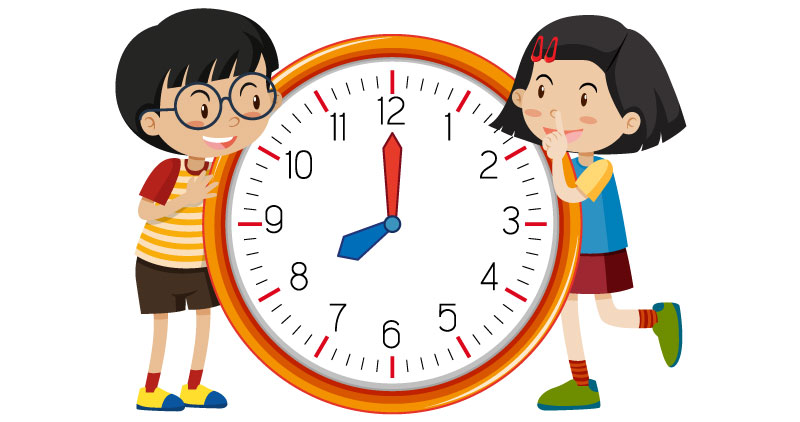
Introducing Outdoor Play To Enhance Math Learning Activities for Children
Introducing Outdoor Play To Enhance Math Learning Activities for Children
Children love to be outdoors and run around, for as long as they can. Even today we reminisce the fond memories of playing on swings, slides, and designing fancy sand castles at the nearby parks. Spending time in the playgrounds is not only liberating, but also good exercise for children. In the midst of playing games like; climbing, hopping, running, and skipping, children are gaining muscle strength and developing their gross & fine motor skills. Being around nature, refreshes the minds and stimulates happy hormones such as dopamine and serotonin, thus proving great benefits to the child’s mental health.
Summer months are excellent periods to get outdoors and appreciate nature. What if we told you that one can make kids learn numeracy skills while cherishing the greenery? Yes, you read that correctly! Through this blog we will demonstrate some important math skills that early learners can grasp in a play-way method, without feeling the pressure of having to deal with complicated numbers. So, let’s loosen up, get innovative and read about some progressive technique of teaching addition-subtraction & other math skills to kids, versus depending upon the traditional textbook approach.
Multiplication With Pebbles
Learning your 2 times table by rote method is such an archaic method. Gather children in a park and ask them to collect a handful of pebbles. Now ask children to arrange pebbles in a row one below the other. For example, 2 pebbles x 1 pebble = 2 pebbles, 2 pebbles x 2 pebbles = 4 pebbles, 2 pebbles x 3 pebbles = 6 pebbles, and so on. The teacher can denote the ‘multiplication’ and ‘equals to’ sign by using a chalk, or use a stick to embed the signs in sand. Children can even take turns, to solve the 2 times table equation. The same can be practiced for tables of higher denomination, as far as there are sufficient pebbles readily available in the garden.

Tick-Tock: Tell The Time on the Clock
Asking children to read time, can get tricky. There are so many details that children need to understand, before they can tell time correctly. When is it a.m. and when to show the p.m.? Does 12 in the afternoon denote a.m. or p.m.? All these questions are pretty confusing and tricky for the child to grasp. And what a bore would it be to just read time out of a watch in class! However, now you can make this activity more exciting. Simply draw a circle to indicate the clock, and write the numbers, as one would see in clock-wise direction. Ask children to collect sticks from the garden, some short and some longer in size. The teacher or parent announces the time aloud, and the child places the sticks on the clock to represent it. The long stick is for the minutes hand and the short stick indicates the hour. So, if one is asked to represent 7.15 p.m., the student places the long stick pointing towards number 3 on the clock, and the short stick pointing towards number 7. Sounds like fun, doesn’t it!
Number Treasure Hunt
This is a pretty interesting activity! The educator divides the class into groups and the group has to choose a leader. Each leader from the group has to understand the rules of the game and communicate it to the team. The activity starts with the teacher assigning clues to the group leaders. The clues are in the form of a Math puzzle. For example: ‘A school library purchases 570 new books this year, out of which 172 are fiction. So how many new non-fiction books did the library purchase.’ Such word problems are pretty intriguing and solving them within the limited time span of the game, is super fun. Now that children have solved the sum and arrived at an answer i.e 398, they need to find this number on a ‘car number plate’ or on a ‘sign board’, to locate their next clue and go on to solving a more challenging math problem. The team that finishes first and successfully solves all the math problems, emerges as a winner.
Making Shapes with Sticks
Learning the ‘agon’ shapes can be quite troublesome at times. Do you remember at the spur of the moment, how many sides does a Heptagon have? Well, if you don’t then probably the concept was taught in a boring way, because your memory retains things that are exciting & unique. So, let us move with the modern-education system trend and make learning shapes a little more amusing. Ask children to pick up sticks on their way to the garden and then lay them on the ground. Now the teacher claps 10 times, and the student has to recollect which ‘agon’ shape has 10 sides. Drumroll please, the answer is ‘decagon’ and the kiddo uses the sticks to form the ‘decagon’ shape. Similarly clapping 6 times, means the child has to construct a ‘hexagon’ and 8 claps means, constructing the 8 sided ‘octagon’.
Whether it is outdoors or indoors, the main idea is to deliver fascinating Math lessons for children to remember the concepts and apply whenever apt. If your child is more comfortable indoors, you might want to find some indoor games to entertain him. Mathletics is an excellent platform that supports Math learning for students in classrooms and at home, pretty popular in the Middle East, including GCC countries. The Mathletics App features many attention-grabbing activities which compliments the school’s Math curriculum. IB Schools in Dubai and all over UAE, hence suggest the Mathletics platform to students for practicing numeric lessons.















Recent Comments